Norfolk Aquires, Repurposes Dormant Farmland with Mixed-Use CPA Project
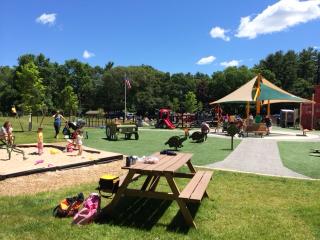
Just outside the town center in Norfolk, Community Preservation funds are helping turn a 22-acre parcel of dormant farmland into land for recreation, conservation, and affordable housing. Formerly called Gump's Farm, the parcel off Route 115 housed a popular farmstand that shut down four years ago and was being eyed by developers for market-rate housing. Thanks to CPA, the land will instead become a multi-faceted public asset for local residents.
The old Gump’s Farm, renamed the Norfolk Community Park at Rockwood Road, was purchased by the town with $1.4 million in CPA funds in 2010. After the acquisition, the Board of Selectmen appointed a working committee, comprised of town officials, interested residents, and land abutters, to brainstorm potential uses for the property. A recreation feasibility study was also conducted with an additional $15,000 in CPA funds.
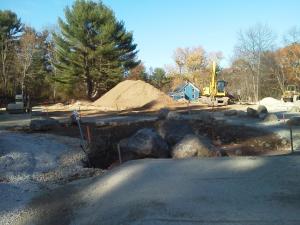 “Tons of ideas were literally drawn out on a board and slowly narrowed down,” said Norfolk CPC Chair Cyndi Andrade, who sat on the working committee. “One of the concerns was that this project backs up into many people backyards, so we ruled out large athletic fields with big lights.”
“Tons of ideas were literally drawn out on a board and slowly narrowed down,” said Norfolk CPC Chair Cyndi Andrade, who sat on the working committee. “One of the concerns was that this project backs up into many people backyards, so we ruled out large athletic fields with big lights.”
Ultimately, a diverse mixed-use plan was developed that would create recreation and affordable housing facilities with areas of conservation land interspersed. The construction, funded by another $750,000 in CPA funds, was broken down into two phases. Phase One wrapped up in late spring, and Phase Two is slated to break ground this summer.
 “Personally, having been involved in this project from start to finish,” Board of Selectmen Vice Chair Jim Lehan said, “I think this is a poster child for CPA. We have retained about 18 acres of beautiful conservation land, developed some much needed recreational space, constructed 4 affordable homes at no cost to the town, and next year will have a community garden in place.”
“Personally, having been involved in this project from start to finish,” Board of Selectmen Vice Chair Jim Lehan said, “I think this is a poster child for CPA. We have retained about 18 acres of beautiful conservation land, developed some much needed recreational space, constructed 4 affordable homes at no cost to the town, and next year will have a community garden in place.”
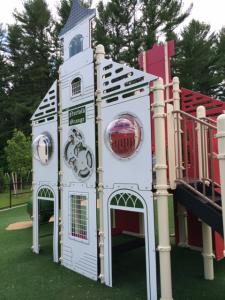 Phase One built out the infrastructure for the playground and picnic areas, in addition to plotting out the outlines of a community garden and biking and walking trails, which will come to fruition during Phase Two. The 1-acre playground, which cost around $280,000, was intended to compensate for the nearby dilapidated Kids’ Place playground on Boardman Street. The new site includes sandboxes, swings, climbing apparatuses and structures designed not only to be safe, durable and accessible, but also to reflect Norfolk’s identity through their decorative elements. Photos of the town’s historic and iconic resources, from its old school house to its “turtle crossing” signs and black fire truck, appear on the surface of the playground’s equipment.
Phase One built out the infrastructure for the playground and picnic areas, in addition to plotting out the outlines of a community garden and biking and walking trails, which will come to fruition during Phase Two. The 1-acre playground, which cost around $280,000, was intended to compensate for the nearby dilapidated Kids’ Place playground on Boardman Street. The new site includes sandboxes, swings, climbing apparatuses and structures designed not only to be safe, durable and accessible, but also to reflect Norfolk’s identity through their decorative elements. Photos of the town’s historic and iconic resources, from its old school house to its “turtle crossing” signs and black fire truck, appear on the surface of the playground’s equipment.
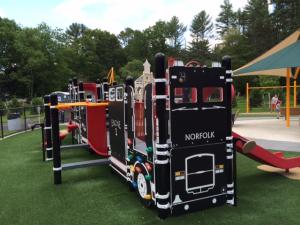 Norfolk Recreation Director, Ann Proto, said there was such a demand for the playground that the town decided to do a soft opening prior to the official ribbon cutting ceremony. “I drive by every day and the parking lot is full, which is so nice to see,” she said, adding that one Facebook post announcing the construction status of the playground received more than 800 hits from residents.
Norfolk Recreation Director, Ann Proto, said there was such a demand for the playground that the town decided to do a soft opening prior to the official ribbon cutting ceremony. “I drive by every day and the parking lot is full, which is so nice to see,” she said, adding that one Facebook post announcing the construction status of the playground received more than 800 hits from residents.
Also during Phase One, three affordable one-family homes were built on just over 5 acres of the Community Park’s land. Norfolk has a bylaw, explained Lehan, that requires an affordable unit to be constructed for every 10 market rate units. A developer of a recent subdivision in town constructed these affordable homes to fulfill the bylaw requirement at no cost to the town, and the Housing Trust will retain the proceeds from the home sales, which is done through a lottery. Each home has an affordable restriction placed on it.
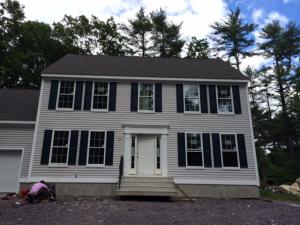 A fourth affordable home is being constructed at an adjacent site purchased by the Municipal Affordable Housing Trust, which has received more than $1 million in CPA funds over the past three to four years, according to Andrade.
A fourth affordable home is being constructed at an adjacent site purchased by the Municipal Affordable Housing Trust, which has received more than $1 million in CPA funds over the past three to four years, according to Andrade.
Phase Two will focus on conservation areas, including the protection of woodlands, a vernal pool, meadows, and fieldstone walls. Andrade said conservation restrictions will be addressed after this phase of the project is completed.
The community garden, another Phase Two component, was one of the most popular proposals for Gump’s Farm, both to keep with its agricultural history and also to provide a way to include Norfolk residents of all ages. As the community garden begins to grow, some residents are already discussing using part of the site to host a farmer’s market.
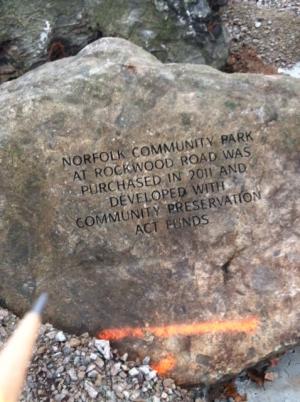 The construction of biking and walking trails will continue to develop over the next year with the goal of connecting the various site amenities and providing non-motorized alternatives for people to cross from one point of town to another. Planners said they anticipate the prime location and the proximity to both a school and senior center to foster significant foot traffic.
The construction of biking and walking trails will continue to develop over the next year with the goal of connecting the various site amenities and providing non-motorized alternatives for people to cross from one point of town to another. Planners said they anticipate the prime location and the proximity to both a school and senior center to foster significant foot traffic.
“The project is very visible and a real asset,” Andrade noted, “usable for all ages.”
Lehan added that the project was a real community preservation triumph in that it incorporated three pillars of CPA. “It stands at the entrance to our town center,” he said, “and reflects the commitment the community has made to preserving our character.”

